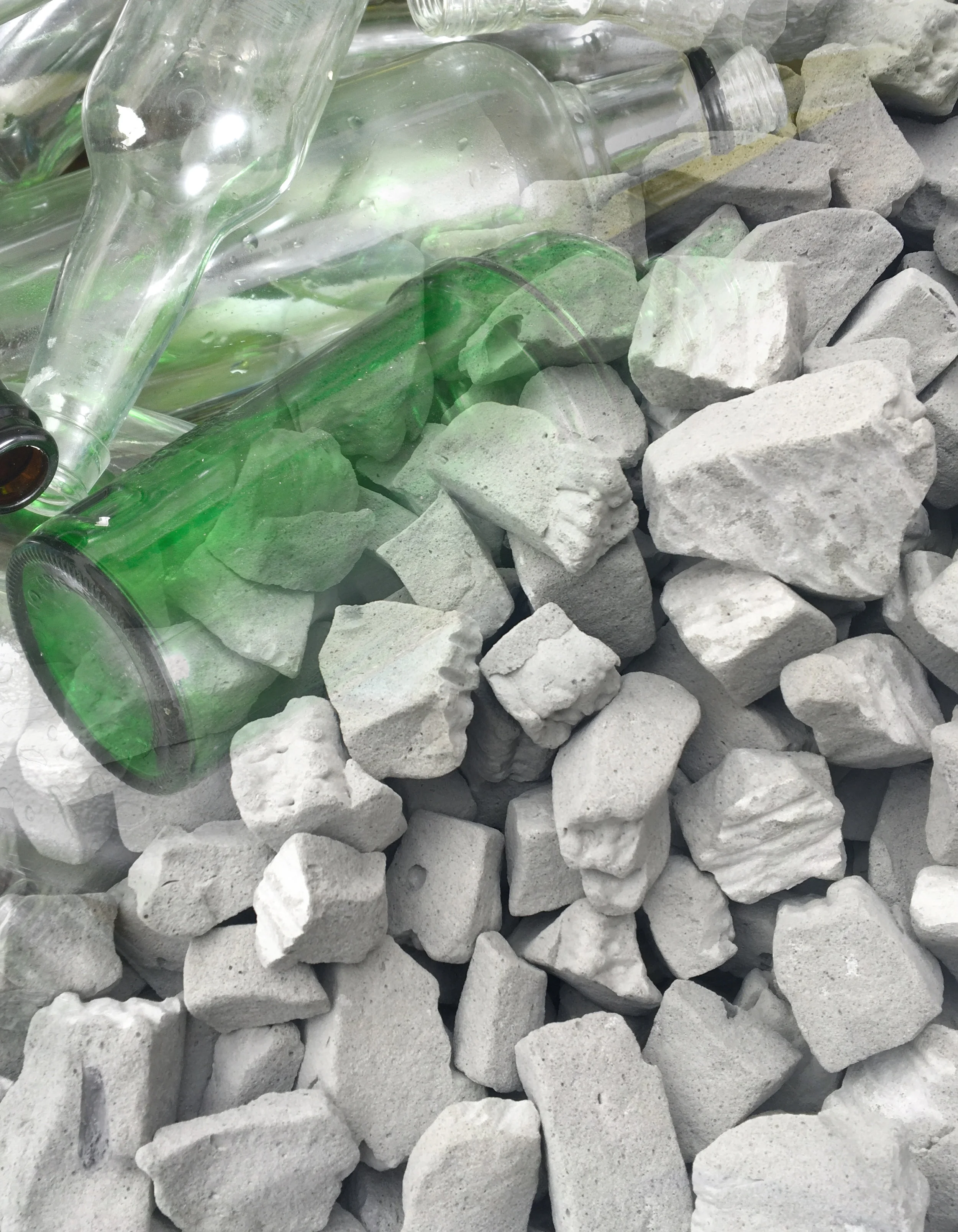AeroAggregates produces ultra-lightweight foamed glass aggregate (UL-FGA) from recycled container glass
The concept of foaming recycled glass was first researched by the U.S. Environmental Protection Agency in the 1970s. It was not until later in the 1980s when a German company developed the process to create lightweight, insulating aggregates from glass through a specialized manufacturing process. The technology was transferred to Norway in the early 1990s where it was developed further for use as a thermal barrier in road construction.
Due to the very low unit weight of foamed glass aggregate, the applications of this material have grown throughout the civil engineering market. Today, foamed glass aggregates are used as lightweight fill for highways, bridge abutments, retaining walls, foundations, and green roofs, and can also be used as aggregate in lightweight concrete.
The manufacturing process takes 100% curbside recycled glass powder and mixes it with a foaming agent.
The mixed powder is sent through a kiln and softened.
During this process, the foaming agent creates bubbles within the softened glass and this creates foamed glass aggregates.
The manufactured foamed glass aggregates are approximately 15% of the bulk unit weight of typical aggregates. This makes the material one of the lightest aggregates available on the market.
















